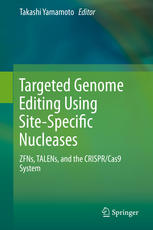

Most ebook files are in PDF format, so you can easily read them using various software such as Foxit Reader or directly on the Google Chrome browser.
Some ebook files are released by publishers in other formats such as .awz, .mobi, .epub, .fb2, etc. You may need to install specific software to read these formats on mobile/PC, such as Calibre.
Please read the tutorial at this link: https://ebookbell.com/faq
We offer FREE conversion to the popular formats you request; however, this may take some time. Therefore, right after payment, please email us, and we will try to provide the service as quickly as possible.
For some exceptional file formats or broken links (if any), please refrain from opening any disputes. Instead, email us first, and we will try to assist within a maximum of 6 hours.
EbookBell Team

0.0
0 reviewsThis book serves as an introduction to targeted genome editing, beginning with the background of this rapidly developing field and methods for generation of engineered nucleases. Applications of genome editing tools are then described in detail, in iPS cells and diverse organisms such as mice, rats, marine invertebrates, fish, frogs, and plants. Tools that are mentioned include zinc finger nucleases (ZFNs), transcription activator-like effector nucleases (TALENs), and CRISPR/Cas9, all of which have received much attention in recent years as breakthrough technologies. Genome editing with engineered nucleases allows us to precisely change the target genome of living cells and is a powerful way to control functional genes. It is feasible in almost all organisms ranging from bacteria to plants and animals, as well as in cultured cells such as ES and iPS cells. Various genome modifications have proven successful, including gene knockout and knock-in experiments with targeting vectors and chromosomal editing. Genome editing technologies hold great promise for the future, for example in biomedical research, clinical medicine, and generation of crops and livestock with desirable traits. A wide range of readers will find this book interesting, and with its focus on applications in a variety of organisms and cells, the book will be valuable for life scientists in all fields.